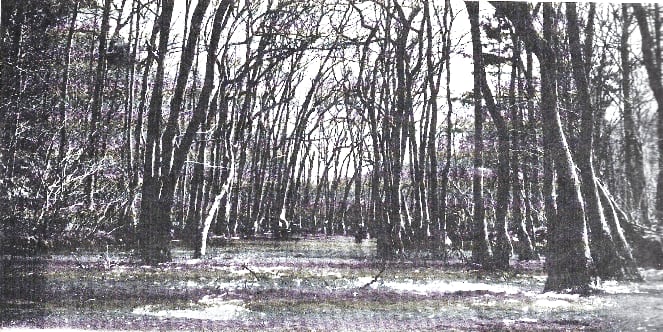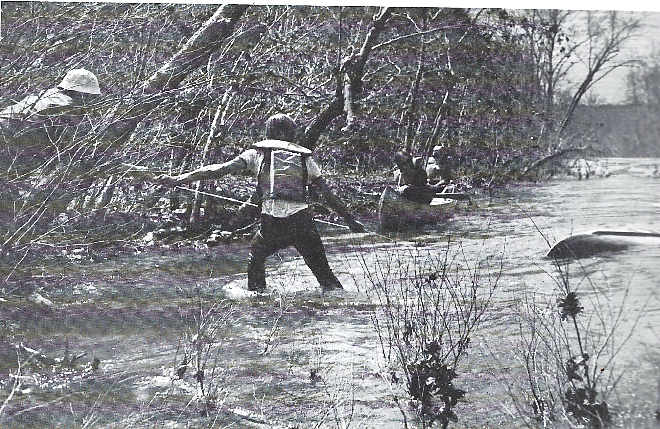
Prize winning photo journalist Lil Junas, Ph.D. died December 11, 2020 in Pennsylvania at the age of 85. Her career was amazing: college sports information, university teaching, and photographic missions throughout the United States, Mexico, Canada, and Central Asia and much more. She was also an avid canoeist and outdoors person, she tent-camped in all mainland US states, in Canada and the Yukon. She spent 4 years in Arkansas (1976-1980) as a photographer for the Log Cabin Democrat newspaper in Conway, AR.
In 1973, the Ozark Society decided to publish books on various endangered Arkansas streams in hopes of exposing the scenic, geological, historical, fish and wildlife, educational and cultural values to the general public, emphasizing the need for preservation. Ken Smith’s Illinois River (1977) was the first in the series, and then Lil was asked to undertake Cadron Creek: A Photographic Narrative (1978) even though she had never been on the Creek.
The threat for Cadron Creek at the time was the Soil Conservation Service proposal to put 23 dams on the Creek for the purpose of flood control, even though the amount of land flooded by the impoundments exceeded the amount of land saved from flooding.
And as luck would have it, her first canoe trip on Cadron Creek was with Alice Andrews. Lil was hooked. There are 85 pictures in the 96-page book, mostly black and white. Many were taken on cold, overcast winter days, e. g. the brooding tupelo gums on the East Fork of the Cadron.
The cultural history discussed in the book is rich. For instance, the name Cadron itself, the once thriving resort and college town at Pinnacle Springs, old iron bridges now gone or moved to Beaver Fork Park in Conway, waterfalls up to 80’, swinging on a rope, swimming and bathing in the creek, frog gigging at night by hand, fishing for bream, hunters, and old folks reminiscing on their front porch. And grist mills, saw mills, felly mills, stave bolt mills and whiskey stills.

People gathered at the Creek for baptisms, social events, relaxation, and news. The Cadron was also the water source for farm animals and people, and habitat and food for beavers, river otters, deer, squirrels, bears, ducks and turkeys.

In 1978, Junas concluded that technology and mechanization had brought progress and change in the daily routine of the people and their community, but Cadron Creek had changed little since the days of the early settlers. The damming project was eventually rejected after a major battle, largely due to the efforts of conservationists and Representative Ed Bethune.
Then along comes widespread fracking in the watershed in 2008, which caused more than 2000 earthquakes locally and threatened water quality but which has momentarily dwindled as a threat because of economics.
The Cadron can have rises of 25 feet, but developers have found the bluffs along the Creek to be lucrative investments. Along with development comes the bulldozing of small streams and culverts that block fish movement.
Members of Ozark Society once floated the Cadron regularly. A float on the Creek is still fun, still class I and II and access has improved, but the view from the Creek suffers some, it is not as pristine as old timers once remembered.
The Junas book has never been reprinted, but I have several personal copies and libraries might also have copies.
